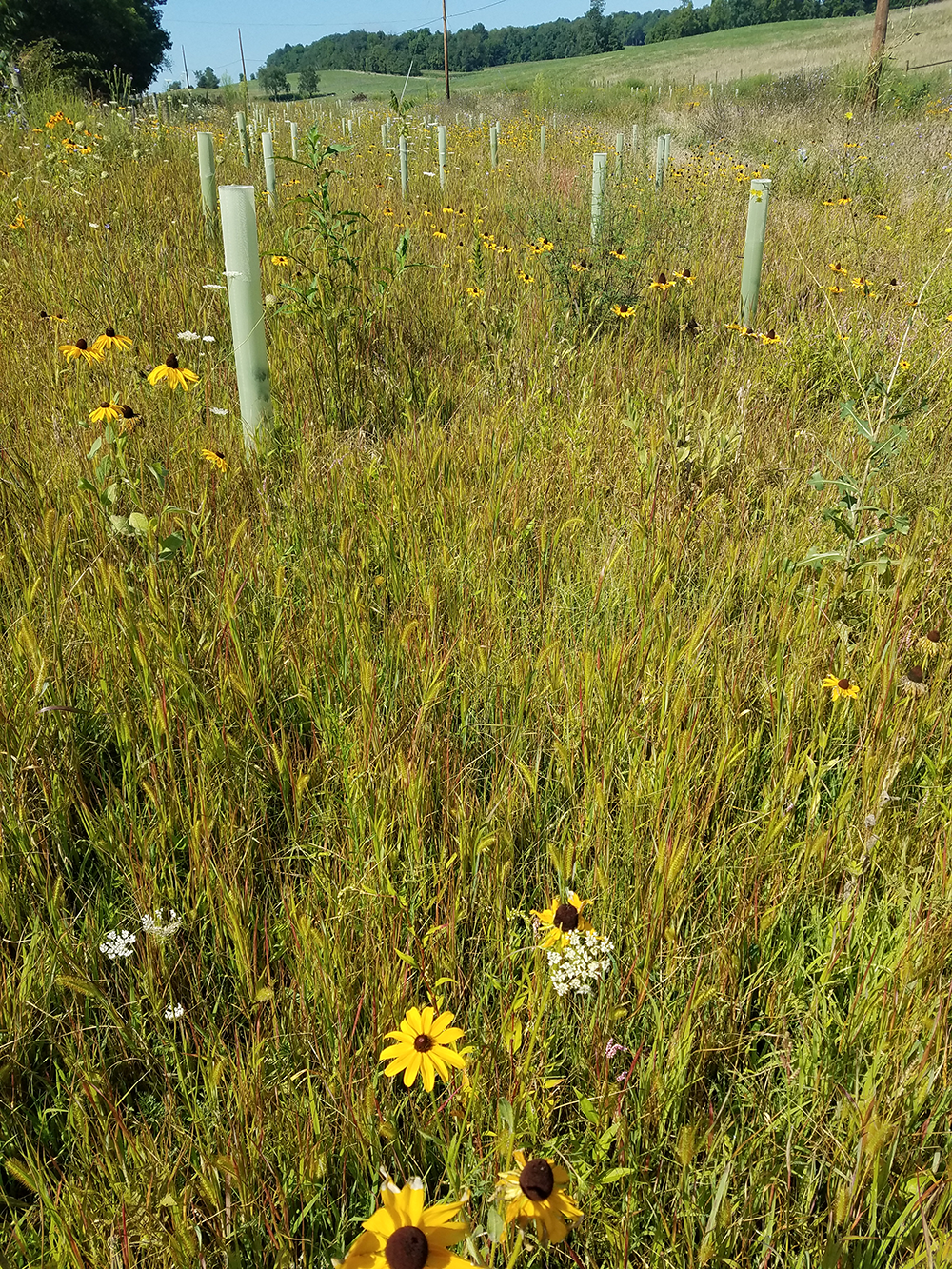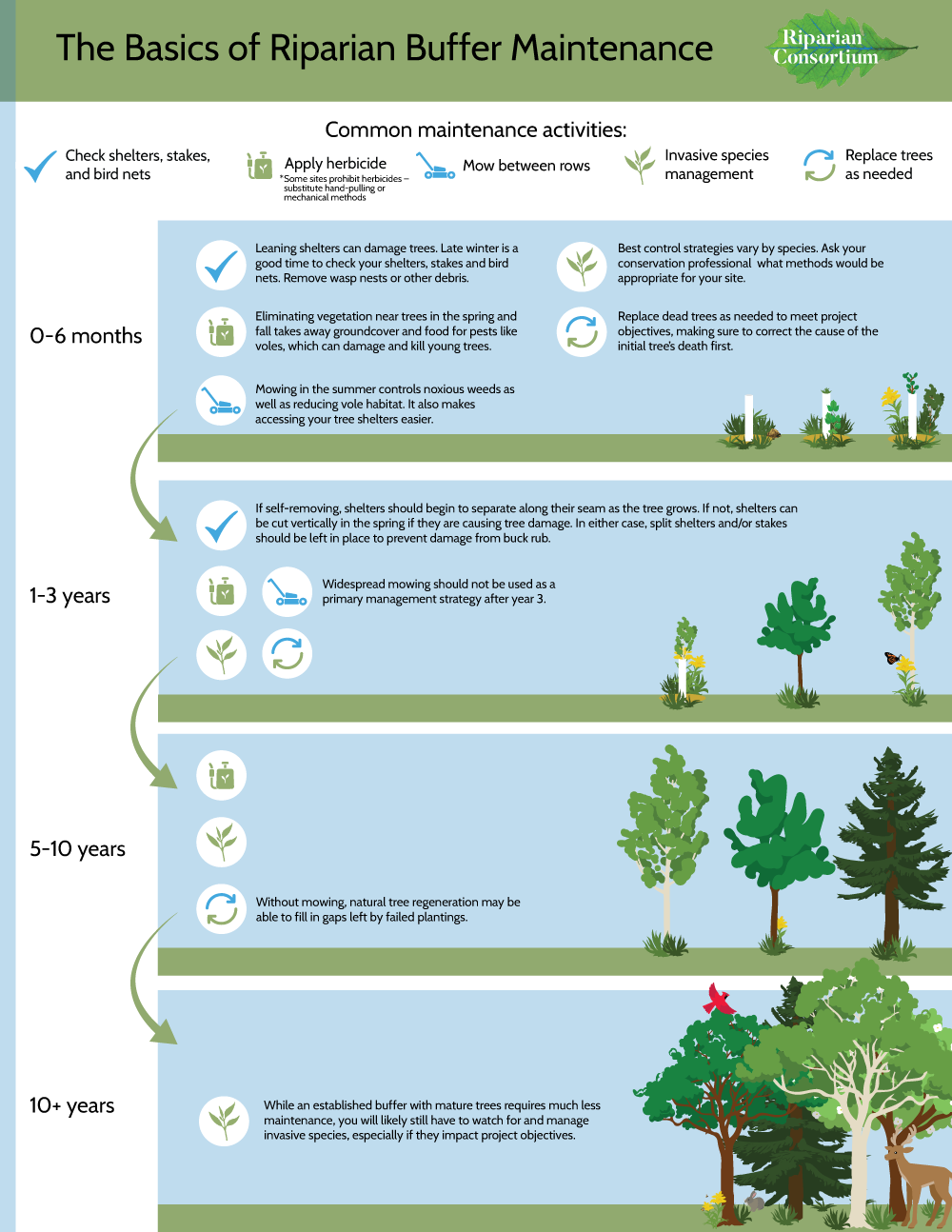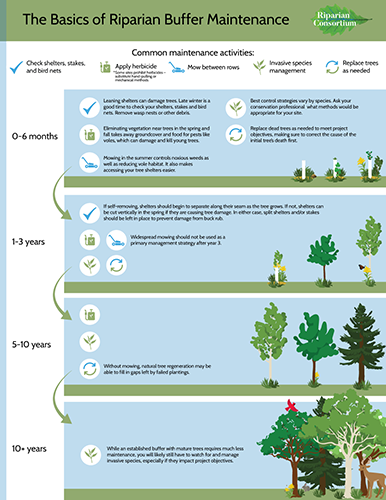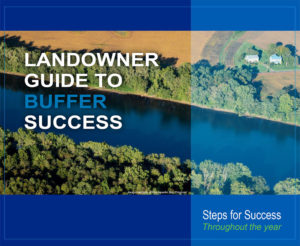Buffer Maintenance/Stewardship
Maintaining a Riparian Buffer
Maintenance varies from site to site and responsibility for maintenance depends on the program being used and the agreement signed by the landowner.
In general, short-term maintenance includes vegetation control around the trees through mowing and spot spraying, invasive species control, insect and disease monitoring, and making sure tree tubes and netting are structurally sound. Seedlings generally do not need to be watered, but larger potted or “balled and burlapped” trees will need routine watering until they become established.
Long-term maintenance includes similar but less frequent procedures, as the trees become more established: Continued weed and invasive species management, removing tree tubes before the tree trunk grows into them (even if they are perforated), removing bird netting once the tree is taller than the tubes, and insect and disease monitoring.
See below for an overview of a buffer’s life span and its maintenance needs, and read our Buffer FAQs for more info.

A Buffer Over Time

Buffer Maintenance



